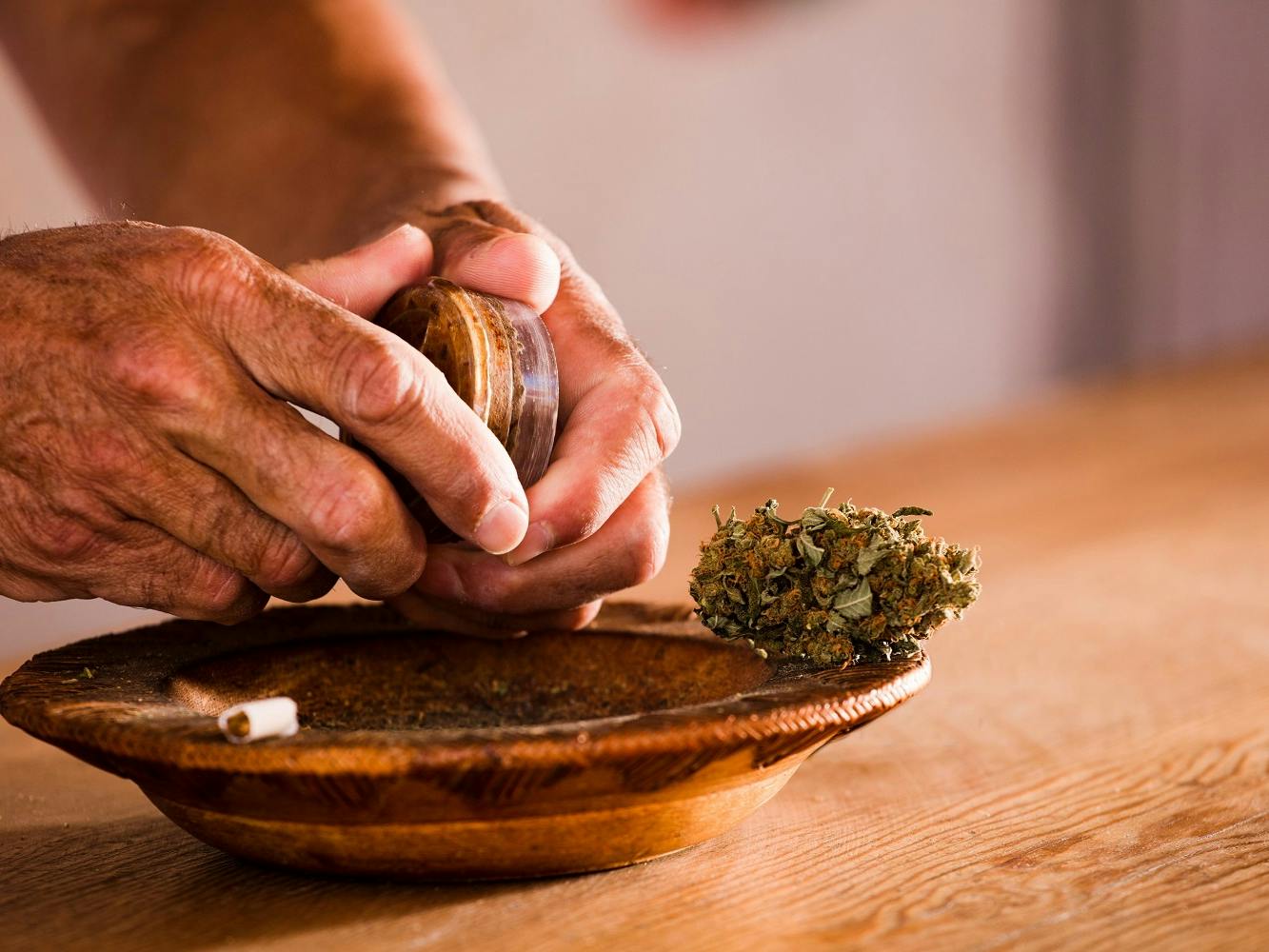
Medical marijuana is gaining in popularity among older people. Here’s what you need to know before you try it.
A lot has changed since the ‘60s – including marijuana, the one-time hippie drug of choice.
As of this past spring, marijuana is now legal in 38 states, plus the District of Columbia, for medical use. It’s also legal for recreational use in 23 states as well as in DC. And you may have heard today’s marijuana is a far more potent drug than what you may have used in your younger years.
Interest in medical marijuana among older people has been growing. One 2020 study found that cannabis (another name for marijuana) use in adults 65 and older increased by 75% over a three-year period. And experts believe these numbers will continue to rise sharply.
Using marijuana as medicine is gaining in popularity as it becomes legal in more states and the stigma of using it lessens. Medical marijuana is particularly appealing to seniors dealing with chronic pain or insomnia who want to avoid opioids or prescription sleep drugs. It also appeals to people who prefer using alternative or natural therapies whenever possible.
Interestingly, using marijuana for medicinal purposes isn’t actually new at all. In fact, marijuana is one of the oldest pain medicines in the world, with evidence that it was used more than five thousand years ago. Ancient Greek, Roman, Egyptian, and Chinese societies used marijuana to ease pain. The drug was even available in American pharmacies until the early 1910s.
Despite this long pedigree, a lot more research needs to be done on how well marijuana works and what its long-term effects on older people may be. Benjamin Han, a geriatric specialist at the NYU Grossman School of Medicine, told AARP.org he gets asked all the time by patients if pot can help manage symptoms of chronic conditions, ease pain, and help with sleep issues. His answer: “We don’t really know at this point.” But researchers are working to gather data so doctors can recommend the drug more effectively.
In the meantime, here’s what you need to know in order to determine if medical marijuana might be helpful for you.
What is medical marijuana?
Marijuana plants produce hundreds of chemicals called cannabinoids, but the two main ones being used for medical purposes are THC (tetrahydrocannabinol) and CBD (cannabidiol). CBD is often used as an oil and may have some relaxing effects. THC is the compound that produces the “high” and also the one being most researched for medical benefits.
Although “medical cannabis” sounds more rigorous and trustworthy than “recreational marijuana,” there’s actually no difference between them in safety, potency, or quality. The only difference is that medical marijuana is recommended by a doctor to treat a specific condition.
What can medical marijuana treat?
Here are some of the most common reasons people try medical marijuana.
Pain
The most common use for medical marijuana is to help reduce inflammation and treat pain, whether the pain comes from arthritis, diabetic neuropathy, or injury. One recent survey found that more than half of adults who used cannabis to manage their chronic pain reported that they were able to lower their use of other pain meds.
Insomnia
Another common medical use for marijuana is helping people with sleep disorders. THC’s effect on the central nervous system can help people fall asleep faster and stay asleep longer. And since sleep is so important for overall health, using the drug this way may have benefits for the entire body.
Multiple sclerosis
Evidence suggests that marijuana can help ease the stiffness and muscle spasms that are symptoms of MS.
Nausea
Marijuana can also be helpful for people who suffer from nausea caused by cancer chemotherapy.
Different states have different lists of conditions that qualify for treatment with medical marijuana. In New Jersey, for instance, there are 17 conditions listed, including anxiety, cancer, glaucoma, inflammatory bowel disease, migraine, and seizure disorders.
Scientists are still doing studies to learn more about how marijuana can help these and many other conditions. Researchers were hopeful, for example, that the drug would be useful in treating diseases that affect the central nervous system, like Parkinson’s and Alzheimer’s. So far, though, studies have not shown strong enough evidence to recommend the drug for these conditions.
What to know before you try medical marijuana
Before buying medical marijuana, here are some important considerations.
Smoking it comes with risk
Medical marijuana comes in many forms, including pills, liquid, oil, powder, and dried leaves. But although smoking the drug will give you the fastest effect, it’s not the best way to take it. Like any other smoked product, marijuana smoke contains toxic substances which are inhaled along with the beneficial compounds.
Start low and slow
There’s a big difference between the marijuana being sold today and the drug that was used decades ago. Plant breeding has more than tripled the amount of THC over the past few decades. Anyone who hasn’t used marijuana for a while should ask for dosage advice from a doctor or expert at a dispensary. Without a lot of data to go on, most patients have to use a trial-and-error approach to see what works best for them. The best advice is to start with a low dose, and slowly increase as needed.
You may be more sensitive
As people age, they may become more sensitive to drugs that target the central nervous system. This could increase your risk of dizziness and falls, another reason to start with a very low dose.
Talk to your doctor
Even though in many states you can buy marijuana without a doctor’s recommendation, you’re better off talking to your doctor. Directly after smoking, cannabis may increase heart rate and blood pressure, so people with coronary heart disease need to be extra careful. Ask your healthcare provider if marijuana is a good option for you and your symptoms. A healthcare professional can also warn you if cannabis will interact with other medications you’re taking.
Get a card
In most states where medical marijuana is legal, a doctor’s recommendation will allow you to get a card that identifies you as a medical marijuana user. That will enable you to purchase the drug from medical dispensaries. While the card isn’t necessary in states where recreational marijuana is legal, it’s still a good idea for medical users. In some states, you may be able to buy more cannabis with a medical card than you can buy recreationally. The card might also help protect you from problems with the law, since marijuana possession and use is still illegal at the federal level.
How Medicare can help
Because cannabis is a controlled substance, most forms of medical marijuana are not covered by Medicare. However, there are a couple of cannabinoid medications that are FDA approved. Dronabinol can reduce nausea and vomiting from chemotherapy treatment, and Epidiolex can treat seizures and epilepsy. Some Medicare Part D and Medicare Advantage plans provide coverage for these prescription drugs.
In addition, some Medicare Advantage Plans may cover a variety of other holistic or alternative therapies, such as acupuncture and massage.
Additional resources
- ClearMatch Medicare: Find a Medicare Plan
- CNN.com: States Where Marijuana Is Legal
- Harvard Medical School: Older Adults and Medical Marijuana Reduced Stigma
- AARP: Marijuana Use Among Older Adults Rises Sharply
- Sleep Doctor: Cannabis and Sleep
- WebMD: Can Medical Marijuana Help Your MS?
- NJ.gov: Cannabis Regulatory Commission
- CDC.gov: Heart Health



